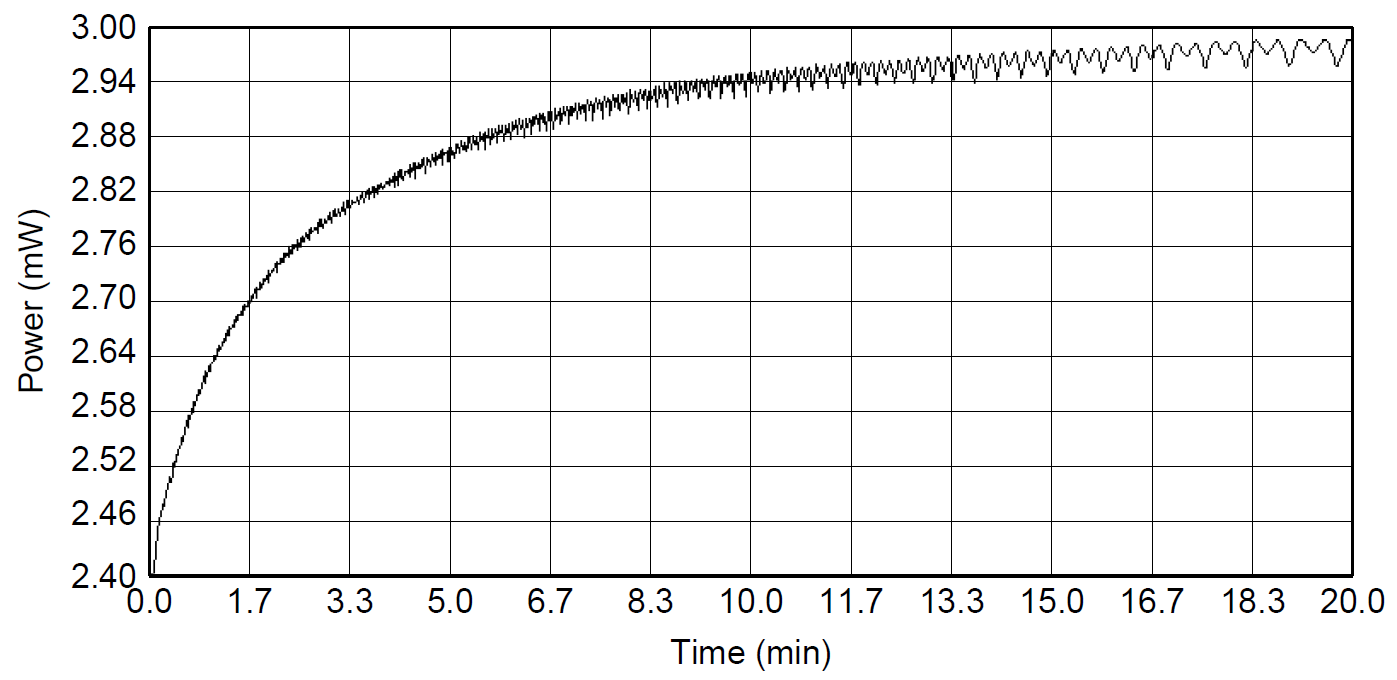
OUTPUT CHARACTERISTICS
 المؤلف:
Mark Csele
المؤلف:
Mark Csele
 المصدر:
FUNDAMENTALS OF LIGHT SOURCES AND LASERS
المصدر:
FUNDAMENTALS OF LIGHT SOURCES AND LASERS
 الجزء والصفحة:
p258
الجزء والصفحة:
p258
 23-3-2016
23-3-2016
 1963
1963
OUTPUT CHARACTERISTICS
The output of a HeNe laser is not immediately stable, as Figure 1.1 shows. At zero a cold HeNe laser tube with a typical output power of 3 mW(and a maximum rated output of 4 mW) was switched on. Lasing output appears almost immediately and rises quickly to a reasonable level, reaching 80% of the final output power in less than 10 s. As the laser warms up, the output power asymptotically approaches the final value of almost 3 mW, but oscillatory behavior is seen in the output power, which varies almost 2% at a period that gradually becomes longer (the period is seen to be 34 s after the laser has been operating for 15 minutes). This behavior eventually disappears as the laser is operated, and for utmost stability it was found that two days was not an

Figure 1.1. Time-dependent behavior of HeNe output power.
unreasonable period. As the laser warms, the entire assembly expands, as does the spacing between the cavity mirrors. As the mirrors slowly move apart, the laser hops from (longitudinal) mode to mode, with a corresponding fluctuation in output power. Commercially, stabilized HeNe lasers exist that use a temperature-controlled heater with a number of optical feedback devices and control loops. These lasers do not require long periods of warm-up to becomes stable.
Aside from stability concerns, a HeNe laser produces an excellent-quality output beam, so is the laser of choice for holography applications. With a spectral width of 1.5 GHz, common HeNe lasers exhibit a coherence length of around 20 cm. This is much better than the average semiconductor laser (which is why semiconductor lasers have been slow to move into holographic applications). When configured for single-mode operation, coherence lengths of over 300 m can be achieved (although this is no longer a common “garden variety” HeNe laser). Most HeNe lasers operate in TEM00 mode and yield excellent beam quality. Although most standard HeNe lasers are randomly polarized, some have integral Brewster windows (in many cases within the tube itself), giving a polarized output beam.
 الاكثر قراءة في مواضيع عامة في الليزر
الاكثر قراءة في مواضيع عامة في الليزر
 اخر الاخبار
اخر الاخبار
اخبار العتبة العباسية المقدسة


